Trekking Sapa: Conquer Nature's Mightiest Landscapes
Trekking Sapa is an adventure in northern Vietnam that offers natural beauty, cultural diversity, and physical challenge. You can choose your options and prepare well. You will enjoy the scenery and the people, and feel accomplished and satisfied. Read your Sapa trekking travel guide from Travel Authentic Asia now.
Why is it worthwhile for trekking Sapa?
Trekking in Sapa is a worthwhile experience that combines stunning natural beauty, cultural immersion, and physical challenge, making it a must-visit destination for any trekking and nature enthusiast.
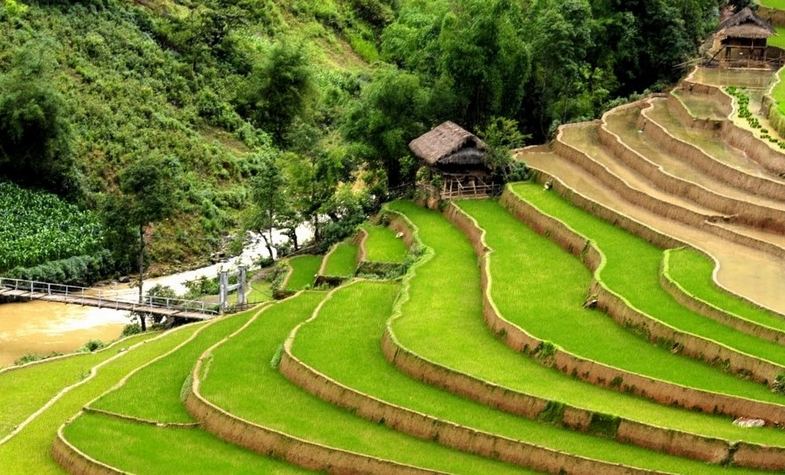
It’s worthwhile for trekking Sapa
Sapa is famous for the most stunning landscapes in Vietnam. The region's rice terraces, valleys, and mountains offer breathtaking scenery, and trekking is one of the best ways to experience the beauty of this area up close.
Additionally, Sapa is a melting pot of ethnic minorities, with several distinct communities residing in the region. Trekking Sapa provides an opportunity to interact with these communities, learn about their unique cultures and traditions, and witness their traditional way of life.
Especially, trekking in Sapa is an excellent way to escape the hustle and bustle of city life and connect with nature. The region's fresh air, lush greenery, and tranquil surroundings provide a peaceful and rejuvenating escape from the stress of modern life.
Moreover, trekking in Sapa is a rewarding physical challenge that can help improve your fitness and overall well-being. Whether you're an experienced hiker or a beginner, trekking Sapa's varied routes offer something for all levels of fitness, providing a sense of accomplishment and a boost of confidence.
Trekking Sapa’s available options
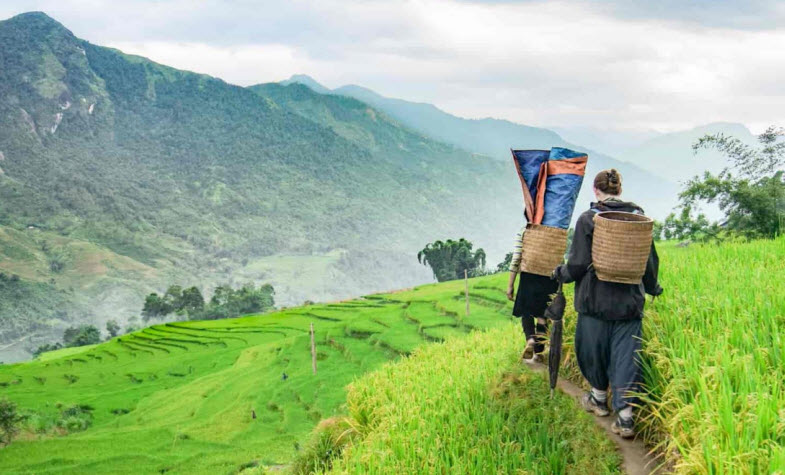
Trekking Sapa
Sapa offers a variety of trekking options, ranging from short and easy hikes to multi-day, challenging treks. Trekkers who want to conquer Sapa trekking can choose from a range of routes that take them through rice terraces, valleys, forests, and mountain passes, and can opt for homestay experiences with local ethnic minority communities. Some of the most popular trekking Sapa routes include Cat Cat, Y Linh Ho, Lao Chai, and Ta Van villages, as well as Fansipan Mountain, the highest peak in Indochina. Most Sapa trekking tours are led by experienced local guides who can offer insights into the region's culture, history, and natural environment. Regardless of the chosen trekking Sapa route, the stunning scenery and unique cultural experiences make trekking in Sapa an unforgettable adventure.
The difficulty level of trekking in Sapa
Sapa trekking varies in difficulty level, ranging from easy walks on flat terrain to strenuous climbs on steep mountain slopes. Trekking Sapa routes such as Cat Cat, Ta Phin, and Ta Van are relatively easy, taking 2-3 hours to complete and suitable for all fitness levels. These routes mainly traverse rice terraces and valleys and require a moderate level of physical fitness.
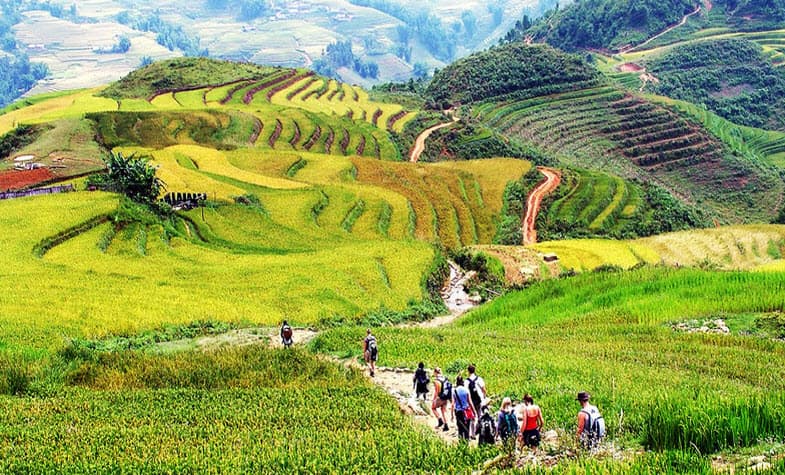
Trekking Sapa routes
However, trekking in Sapa to higher elevations, such as Fansipan Mountain, are much more challenging and requires a higher level of fitness and endurance. These treks can take several days to complete, involve steep ascents and descents, and require a higher level of physical fitness, stamina, and acclimatization to high altitudes.
It's essential to select a trekking Sapa that matches your fitness level and experience, as the challenging terrain and harsh weather conditions can make some treks dangerous for inexperienced or unfit hikers. In general, it's advisable to do some physical training before embarking on a trek in Sapa and to check the weather forecast before setting out. With proper preparation and a realistic assessment of your physical capabilities, trekking in Sapa can be a challenging and rewarding experience.
Video: The train to Fansipan mountain, Sapa
Related Vietnam tours you may like:
The best time for a Sapa trekking
The best time for trekking in Sapa is during the dry season, which runs from September to November and from March to May. During these months, the weather is cool and pleasant, with clear skies and lower humidity, making it ideal for outdoor activities like trekking.
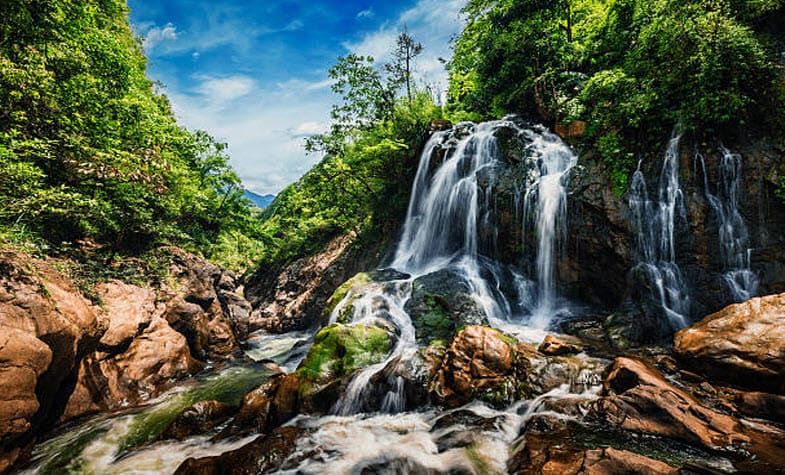
Best time for trekking Sapa
In September and October, the rice terraces in Sapa turn golden yellow, creating a stunning backdrop for trekking Sapa. The weather is also relatively stable, with only occasional rainfall, which makes trekking easier and more comfortable.
In March and April, the weather is also mild and pleasant, and the landscape is lush and green after the winter season. These months are also an excellent time to witness the local ethnic minorities' cultural festivals, such as the H'mong New Year.
During the wet season, which runs from May to August, trekking in Sapa can be more challenging due to the heavy rainfall and slippery terrain. The winter months from December to February can also be cold and foggy, with limited visibility and challenging hiking conditions.
Overall, the best time for trekking Sapa is during the dry season, especially in September and October, when the rice terraces are at their most stunning. Regardless of the season, trekkers should always prepare for changing weather conditions and bring appropriate gear, including raincoats, warm clothing, and sturdy footwear.
Read more: Best time to visit Vietnam
Preparing for trekking Sapa
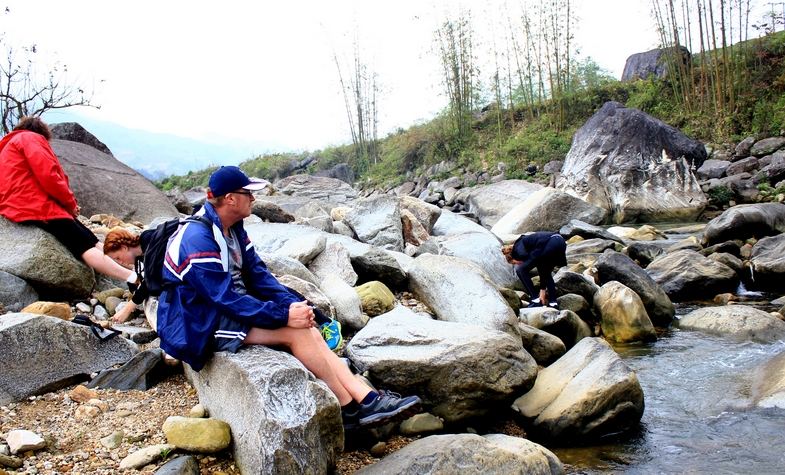
Preparing for trekking Sapa
Preparing for trekking in Sapa is essential to ensure a safe, comfortable, and enjoyable experience. Below are some essential items to bring and factors to consider when preparing for your Sapa trekking:
-
Proper Clothing: Bring warm clothes, a raincoat or poncho, and good-quality hiking boots or shoes. The weather in Sapa can change quickly, so it's best to be prepared for different conditions.
-
Sun Protection: Bring a hat, sunglasses, and sunscreen to protect yourself from the sun's harmful rays.
-
Insect Repellent: Sapa is known for its mosquitoes, so it's important to bring insect repellent to avoid getting bitten on your Sapa’s hiking trails.
-
First Aid Kit: Bring a basic first aid kit with items such as band-aids, painkillers, and anti-diarrhea medication.
-
Water and Snacks: Bring enough water and snacks to last for the duration of your trekking Sapa. It's important to stay hydrated and energized while hiking.
-
Cash: Bring enough cash for your trip, as there may not be many ATMs or places to withdraw money in remote areas.
-
Trekking Guide: Consider hiring a local trekking Sapa guide who can provide valuable information about the area, culture, and language. They can also help ensure your safety on the trek.
-
Fitness Level: Sapa trekking can vary in difficulty, so it's vital to assess your fitness level and choose a trek that matches your abilities.
In conclusion, Sapa is a stunning destination that offers a unique and rewarding trekking experience. From the rice terraces and valleys to the highest peak in Indochina, Sapa's landscapes are breathtaking, and its culture is rich and diverse. The region's ethnic minorities are friendly and welcoming, and homestay experiences offer a glimpse into their unique way of life. So let’s go trekking Sapa to conque its mighty nature.
Read more:
***
Travel Authentic Asia Company is your best choice for discovering the beauty of Southeast Asia. Our experienced and knowledgeable travel advisors are committed to helping you create a tailor-made tour and extraordinary experiences in this majestic region.
If you're looking for an authentic cultural experience, do not hesitate to contact Travel Authentic Asia to choose a Vietnam tour, Southeast Asia tour package or to customize your own style tour to South East Asia.

